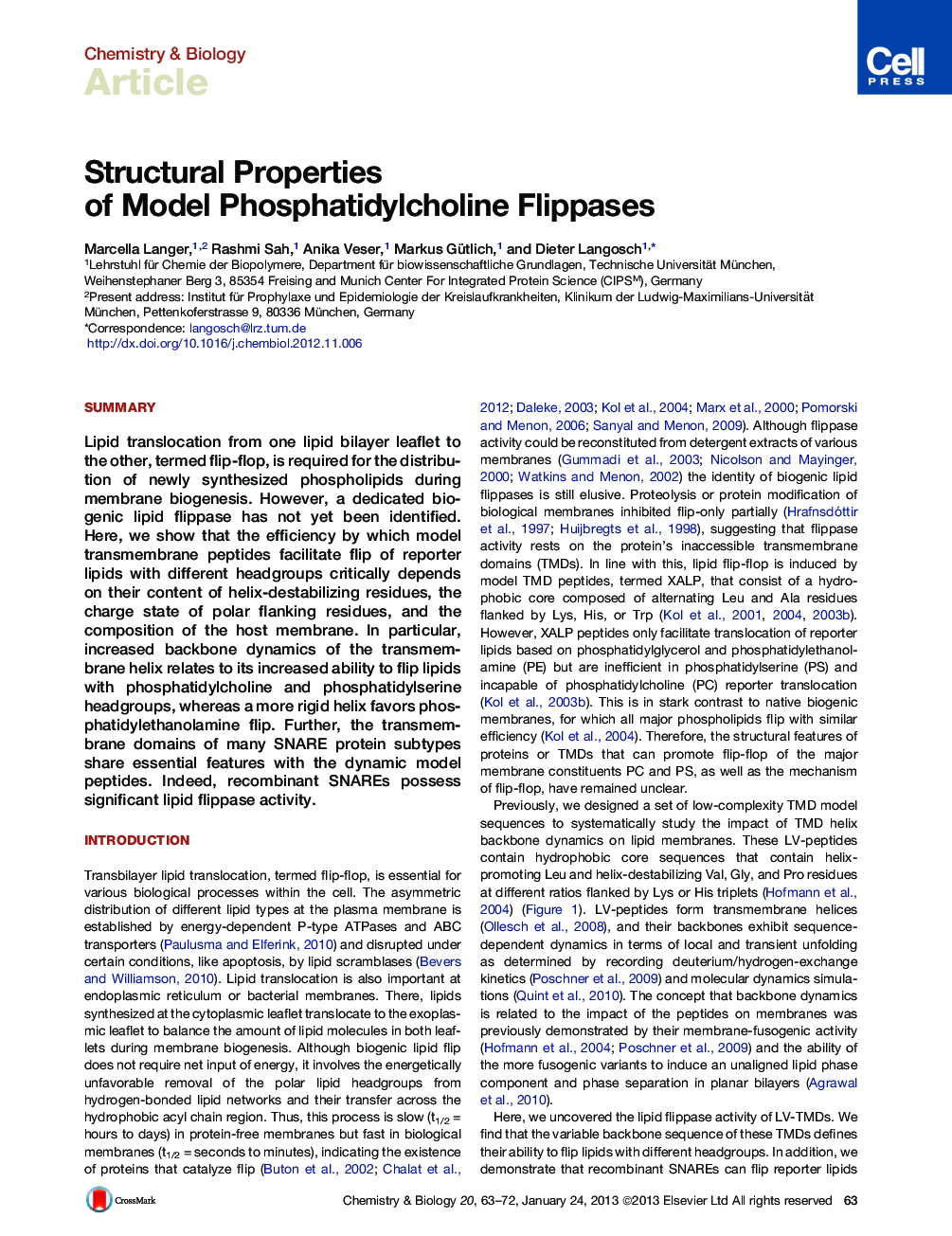| Article ID | Journal | Published Year | Pages | File Type |
|---|---|---|---|---|
| 1391225 | Chemistry & Biology | 2013 | 10 Pages |
SummaryLipid translocation from one lipid bilayer leaflet to the other, termed flip-flop, is required for the distribution of newly synthesized phospholipids during membrane biogenesis. However, a dedicated biogenic lipid flippase has not yet been identified. Here, we show that the efficiency by which model transmembrane peptides facilitate flip of reporter lipids with different headgroups critically depends on their content of helix-destabilizing residues, the charge state of polar flanking residues, and the composition of the host membrane. In particular, increased backbone dynamics of the transmembrane helix relates to its increased ability to flip lipids with phosphatidylcholine and phosphatidylserine headgroups, whereas a more rigid helix favors phosphatidylethanolamine flip. Further, the transmembrane domains of many SNARE protein subtypes share essential features with the dynamic model peptides. Indeed, recombinant SNAREs possess significant lipid flippase activity.
Graphical AbstractFigure optionsDownload full-size imageDownload high-quality image (365 K)Download as PowerPoint slideHighlights► Model peptides induce sequence-dependent flip of lipids with different headgroups ► Flip activity of peptides depends on the lipid composition of the host membrane ► SNARE proteins have lipid flippase activity
